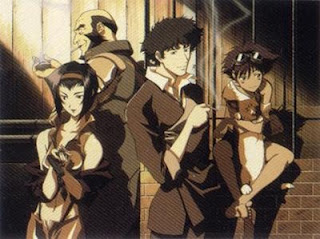The music videos for My Chemical Romance's album Danger Days features a setting and story that could help me find ways to combine modern and western designs. Though the videos don't quite have a Western feel, they are set in a desert with the same kind of landscapes that may be seen in my story, and their use of bright colours with the designs is something I would like to experiment with for my character designs. The outfits and clothes also have shapes and details that wouldn't look too intrusive when added to a cowboy style of clothing, so these designs are something to keep in mind.
 |
| Danger Days |
This series of music videos has also spawned a comic book series, penciled by Becky Cloonan. This could also be worth looking into, seeing what translates well into still images and the kind of angles and landscapes used in this setting.
 |
| Cloonan's Killjoys |













